Pioneering Women
-
Parsons, Joan Mary
Joan Mary Parsons 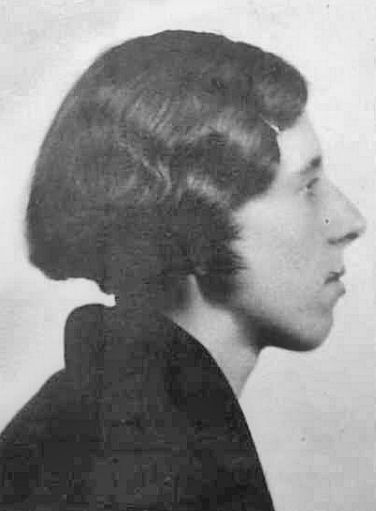 RAeC 1933
RAeC 1933 1938
1938Christened Alys Helen Mary Parsons, but always known as 'Joan', and sometimes spelt her first name as 'Ailiss'
LRAM is 'Licentiate of the Royal Academy of Music', which is a licence to teach music.
5ft 7in tall, green eyes
Father: Rev. Randolph Cecil Parsons (d. 1941), Mother: Florence Emily [Ashton] (d. 1946)
Her elder brother, John Cecil Lawrence Parsons, b. 1905 in Bournemouth, also had a pilot's licence:
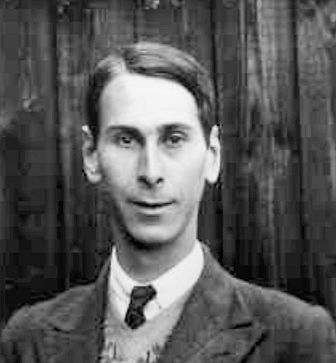 1934
1934prev: 'Domestic At Home'; piano teacher
She advertised in the Leamington Spa Courier, 8 July 1930: "MISS JOAN PARSONS, L.R.A.M. (PIANISTE). Pupil of Mr. Evlyn Howard-Jones. Is open to Public and Private Engagement and visits Pupils. Address; 19, Avenue Road, Leamington Spa."
Having gained her Royal Aero Club Certificate in 1933, she was "thwarted in her ambition to follow a career as a commercial air pilot" as, when she had put in the necessary 200 hours solo and took the examination. she was not passed. She later said that, on insisting upon an explanation, she was told that 'although her flying was up to the required standard, her health was the obstacle".
Nothing daunted. she took up "an intensive course of physical culture, and eventually improved her health sufficiently to be able to pass the test. But then, having temporarily relinquished her solo flying, she discovered, to her great disappointment, that she was unable to fulfill the condition of the requisite number of hours in the air."
She then worked for a while at Hayling Island aerodrome.
In 1938, she used a legacy "from an elderly relative" to buy G-ADNL, a Miles M.5 Sparrowhawk, first registered 12 Aug 1935 to Phillips & Powis Aircraft Ltd.
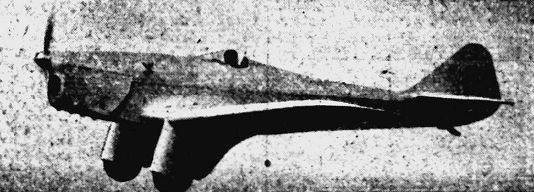 G-ADNL in 1938
G-ADNL in 1938It had competed in the King's Cup in 1935 (flown by Frederick Miles himself), coming 11th/29, 1936 (flown by Patrick Maxwell, an Instructor at the Phillips and Powis Civil Training School), coming 9th/26, and 1937, (flown by Wing-Cmdr Frederick William Stent, who died 28 Jun 1938 in the crash of the Miles M.11C G-AEYI), coming 7th/27.
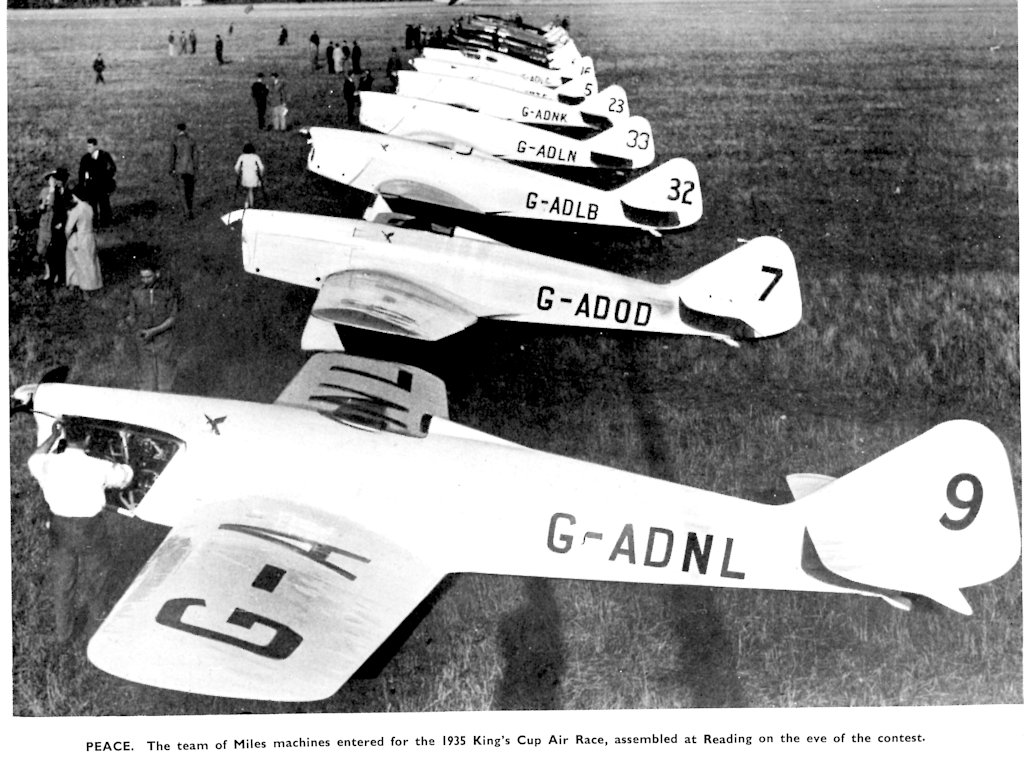 G-ADNL in 1935
G-ADNL in 1935In May 1938, she started a "lone, and almost unprepared" flight to Cape Town and back. It was her first flight outside England or Scotland.
She left Lympne, without telling anyone except her parents, on 7 May 1938.
Her father said he had absolute faith in his daughter. "I am sure she will accomplish her objective," he said. " She is not out to break records. but to gain experience. She is full of the spirit of adventure. Flying is in her blood."
Major J. E. Bonniksen, of the Leamington, Warwick and District Aero Club, said Miss Parsons, who was taught to fly by Tommy Rose, deserved real encouragement. "She is made of the right stuff," he said.
Things went smoothly to begin with: "... in 75 minutes I arrived at Le Bourget. I cannot describe the thrill I felt as I zoomed over the Channel. 1 thought of Bleriot and all the pioneers of flight who had opened up the pathways of the air — and I felt ashamed when I realised how insignificant I really was."... " After undergoing the usual formalities at Le Bourget, I flew towards St. Etienne and arrived there in a couple of hours. It was raining and I had to spend the night there. Next morning I went on to Marseilles, and 40 minutes later I was at Cannes."
Then the first hitch: "In Cannes I learned that it was impossible to fly over Rome because of Hitler's visit. That was that! I had to spend two days at Cannes. Eventually I left for Rome at three o'clock in the morning arriving five hours later. I had no time to lose, so immediately after the customs formalities I took to the air again and at 11 a.m. I was in Athens. What scenery I saw!"
"I continued on my way some minutes after my arrival, and at 2.45 p.m. I landed at Amscat, Lybya. Having a flat tyre, I had five hours to wait. At last I got going again, and landed the same day at Dekheila. I spent the night at :Alexandria before starting off again the next morning for Almaza."
[What she failed to mention is that a) she had to make a forced landing on 19 May, due to shortage of petrol, at an aerodrome at Khalkis, (which she described as being "all ridges") some distance short of Athens, and b) she had only two hours of daylight to fly from Amscat in Libya to Alexandria.]
She then spent a few days sight-seeing in Cairo.
After that, frankly, it was a catalogue of mishaps...

She made another forced landing, on 24 May, at Victoria West, running into a barbed wire fence which wrapped itself round the propeller and damaged the fuselage. The local garage mechanics had never worked on an aeroplane before, but eventually fixed it in five days.
However, she eventually reached Capetown, and stayed there until 1 July when she started back, "following the old Imperial Airways route... she expects to take 8 days. She hopes to reach Broken Hill, Rhodesia, tomorrow"
She left Mpike, in Northern Rhodesia, on 4 July for Mbeya, in Tanganyika Territory.
By the 6th July, the newspapers reported "NATIVES SEARCH FOR MISSING LEAMINGTON WOMAN - Nothing heard of her since Monday - Concern for safety of former music mistress"
... until...
9 July 1938: "BRITISH AIRWOMAN STILL STRANDED. Motor Boat Has Not Yet Reached Her. Dar es Salaam. Tanganyika, Friday.
Miss Joan Parsons, the Leamington airwoman. who was found by natives yesterday after she had been missing for three days, is still stranded in the bush near the Rufijii River, some 200 miles north of Mbeya, Tanganyika. Miss Parsons, who came down while on a flight from Capetown to London, is believed to be unhurt, though her plane was wrecked [sic]. The District Officer for Kiberege (Mr. Theodore Pike), well known Irish Rugby international, who has gone to her rescue by motor boat up the Rufiji, has not yet reached her.
An official Government communique issued here to-night says: There has been no further news of Miss Parsons, but this is not surprising as the District Officer has not yet been able reach the position where her aeroplane is reported to have crashed.” An R.A.F. machine left Mbeya to look for her this morning, but visibility was very bad because of cloud and the plane returned to Mbeya."
Her father said "We were getting rather frightened. It was such a shock to hear that Joan was missing and then to hear nothing further"
Her mother added "She will be ordered home. She will not be allowed to go on more flights of this nature"
[Good luck with that...]
By the 12 July, more of the story emerged: "Plane Runway Cut in Bush for Air-Girl. A solitary native road worker who witnessed the landing in the bush of Miss Joan Parsons, the Leamington airwoman, ran 30 miles to inform the district officer, Mr. Theodore Pike. He set off at once by moonlight for the Rufiji River in a motor boat, and is now assisting to cut a runway through the long grass where the plane landed. Miss Parsons may take off for Iringa, 80 miles away. She was given native foods, tea and sugar by Christian natives after landing. She sent no SOS, but merely asked for petrol and oil."
She arrived back at Nairobi on the 15 July and was hoping to leave for the UK the same day, but the "Authorities" insisted that she be escorted over the Sudan, and she had to wait for some RAF machines which were flying to Egypt.
She landed back in Lympne on 8 August, then reached home in Leamington Spa on 11 August 1938
Despite the plans which had been made to give her a triumphal return home, bad weather forced a delay to her final leg from Reading, so the civic reception waited for hours, eventually presented the bouquet to her brother and then went home.

Home at last, with Maj. Bonniksen and H C Everitt, of the Leamington Spa and Warwick Aero Club
Afterwards, she said her chief anxiety was "to save sufficient money to make a flight to India"
She had other plans, too:
2 Sep 1939 - "Miss Parsons is as keen as ever on aviation, and she recently purchased an Airspeed Courier six-seater machine which was used by Sir Alan Cobham on his India flight. The machine is being refitted by the makers, and Miss Parsons will, in all probability, use it for passenger work."
She bought G-ABXN, a 1932 Airspeed AS.5 Courier formerly owned by North Eastern Airways Ltd, based at Croydon:
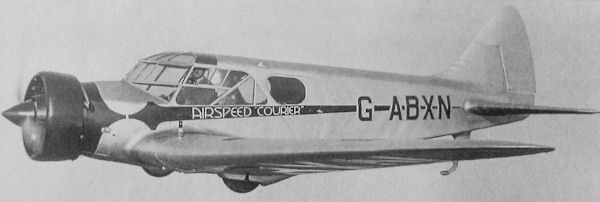
However, Britain's Declaration of War the very next day put a stop to all that; the aircraft was requisitioned in June 1940 and only lasted until September, when it was scrapped.
Contract Terminated by ATA after 1 month]
"Leamington's Airwoman of African Fame"
"AIRWOMAN FINED FOR QUITTING JOB
Complaint About Workmate "Exaggerated"
Joan Parsons, who made a name for herself 1938 by flying solo to the Cape, was fined £5 to-day at Leamington, Warwickshlre, for falling to comply with a Ministry of National Service direction to work in an aircraft factory. Mr. W. A. Coleman, prosecuting, said that after being at a bench for two days Miss Parsons wrote to the firm complaining that she had been molested by a labourer, who repeatedly jabbed her under the arm. This so played on her nerves that she could not continue, and she left, declining to return for fear of further aggression.
''Of African Fame"
The letter was signed, "Joan Parsons, Leamington's airwoman of African fame." The complaint was grossly exaggerated, said Mr. Coleman. The labourer was a reputable workman, who thought he was encouraging the defendant by a playful act. Gilbert Stackhouse, shop foreman, said the labourer just touched Miss Parsons on the shoulder and said: "It won't be long now." 'I knew what he meant, but she didn't." added witness. "I told her that the man was trying to keep her happy, and instructed him not to go anywhere near her again."
The "Rough Man"
In evidence Miss Parsons said her father was a clergyman. The "rough man" who irritated her wanted to tickle other girl employees. The man leered in her face and was very objectionable. She kept away from the factory because she feared an act of revenge. Mr. Coleman: But surely you have had some experience of the world and meeting people? Miss Parsons: Yes. I have been treated very well abroad, and natives in territories on which I have had forced landings in Africa have looked on me as a goddess”.
Mr. Overall, defending, said it was not everybody who reacted favourably to being jabbed in the ribs every two or three minutes." - The Yorkshire Post, 8 November 1943
d 20 Sep 1989 - Weston Super Mare, Somerset, leaving £118,000
[Her Sparrowhawk G-ADNL was later converted into the sole Miles M.77 Sparrowjet:

... and on 13 July 1957, it won the King's Cup with a maximum speed of 228 mph.
-
Pellier, Leonore Mary de Chancal
Miss Leonore Mary de Chancal Pellier
Royal Aero Club Certificate 8590 (17 May 1929)

b Abbotskerswell, 25 Jun 1905
a 'spinster of independent means'
-
Pioneering Women
Pioneering Women
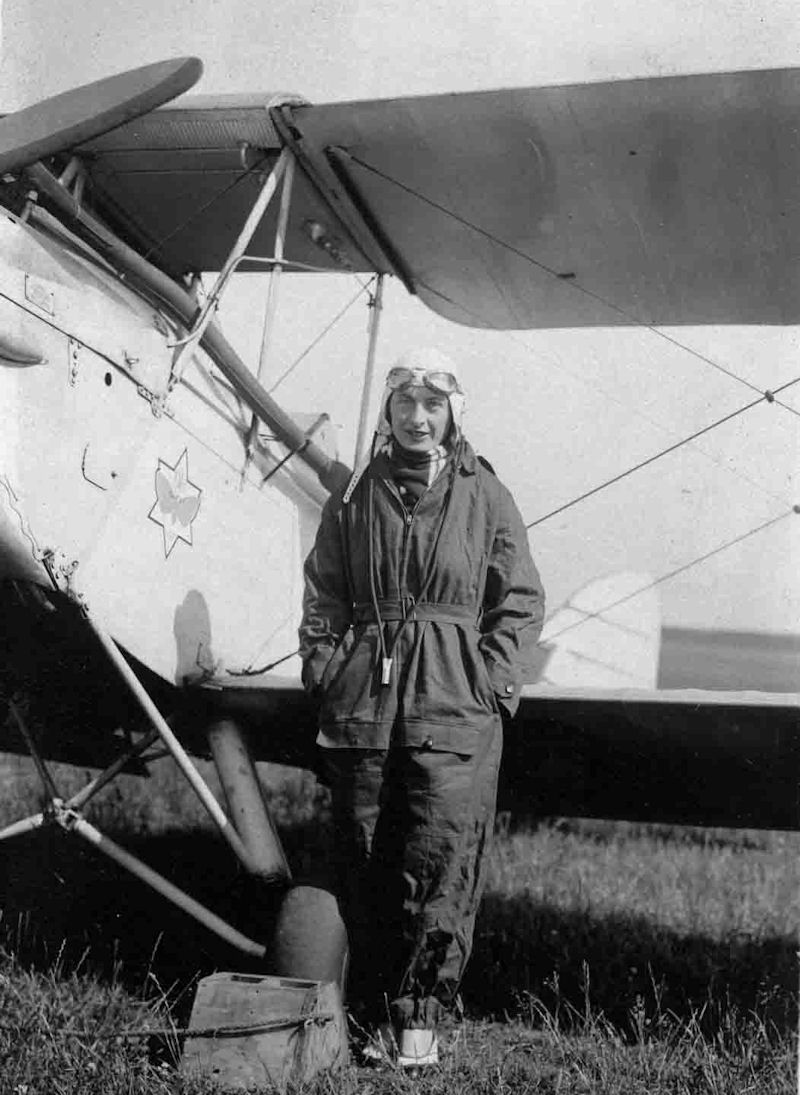
Here is some splendid stuff from Mary Bertha de Bunsen in 1934, from an article called 'Practical Flying for Women':
"When present-day landing problems are simplified, the lady owner-pilot upon her daily shopping and visiting rounds is likely to flourish as does her counterpart upon the roads." 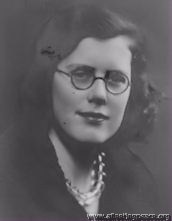
Mary Bertha de Bunsen in 1932, aged 22.
An accomplished aviator in her own right, Mary was born 29 May 1910 in Madrid, the daughter of Sir Maurice, the British Ambassador there.
She had been dragged round dances and hunt balls by her parents in the hope of finding her a suitable husband - these were, of course, in short supply after the carnage of WWI. "I was far too innocent to realise... that with a lame leg [after a childhood attack of polio] and horn-rimmed glasses I stood no chance whatever". She never married, and died in 1982 in Dorset.
"An owner-pilot, Mrs Hamilton-Gault, has with her husband travelled England and the Continent for four years in a Moth rejoicing in the registration letters 'G-AAGA'.
She is an example of the practical lady pilot whose aeroplane is used, when weather permits, for all travelling in England and abroad. Once a week or more, in summer, she flies to London and back to her home in Somerset.
She is, however, forced to use the aerodrome at Yeovil - some distance from her home - owing to the lack of landing grounds in the Somerset Hills, which keeps a number of air-minded people in the county from taking up flying."

Lady G-AAGA
(actually, Dorothy Hamilton Gault. That was a joke)
see also here for more on her interesting husband, Andrew Hamilton Gault!
"...Another lady aeroplane owner, Miss Giles, who has flown several hundred hours, regarded her flying until the last two years more as a sport than a practical means of transport. Now that the number of aerodromes has increased, she is, however, usually able to insist that she will come to the nearest aerodrome, from whence her friends must fetch her." 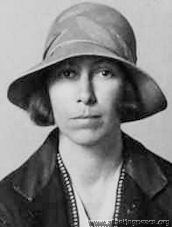
Joanna Elder Giles
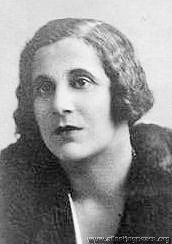
Elise Battye
"On an income of £1,000 a year, Mrs Elise Battye keeps a small house within thirty miles of London, a Morris Minor as an essential adjunct to the scheme, and a Moth aeroplane. In the latter she flies 180 to 200 hours a year for under £250 all told.
She flies constantly to the Isle of Wight, Gloucestershire and Norfolk - to the last two as many as three times a month - and all these places are unpleasant to get to by any other means." [this is still true, of course]
[The average salary in 1934 was somewhat less than £200 a year]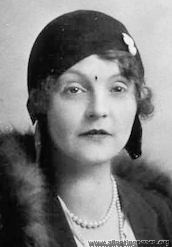
Adelaide Cleaver
"Mrs Spencer Cleaver makes the usually fatiguing journey to Northern Ireland three or four times a year in her own aeroplane, and, fitted with extra tanks to save refuelling during the day, it has many times enabled her to breakfast in London, shop in Paris from 11 to 1, and return in plenty of time for dinner at her house in London."
[see here for more about Adelaide]
Meanwhile, down-to-earth Pauline Gower, who was traipsing about the country with her engineer friend Dorothy Spicer making a living from joyriding, thought that flying "is the best antidote to the manifold neuroses which beset modern women, usually because they have too little to occupy their minds."
Pioneer British Ladies
Here's an interesting chart (honest) - it shows the number of Aviator's Certificates issued by the Royal Aero Club each year, from 1911 to 1934, to men and women:
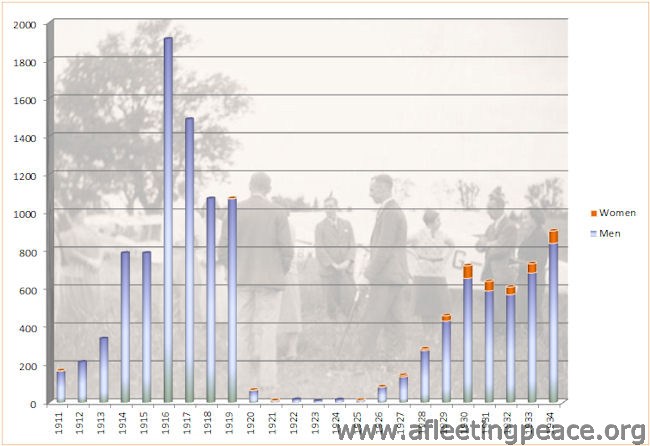
The numbers, in case you ever need them, are:
Year Certificates Issued Men Women 1911 168 166 2 1.2% 1912 214 214 1913 337 337 1914 ~787 ~787 1915 ~787 ~787 1916 1,913 1,913 1 1917 1,491 1,491 1918 ~1,074 ~1,074 1919 ~1,074 ~1,073 1 0.1% 1920 66 64 2 3.0% 1921 11 11 1922 17 16 1 5.9% 1923 10 10 1924 16 16 1925 13 12 1 7.7% 1926 83 82 1 1.2% 1927 144 135 9 6.3% 1928 283 274 9 3.2% 1929 457 429 28 6.1% 1930 720 654 66 9.2% 1931 638 588 50 7.8% 1932 608 568 40 6.6% 1933 731 682 49 6.7% 1934 903 838 65 7.2% Totals 12,545 12,221 325 2.6% apart from the fact that hardly anybody (apart from those in the armed services, presumably) learnt to fly for about 6 years after WWI, this means:
- there were only 9 women in Britain who had RAeC certificates before 1927, out of a total of 8,205;
- only 27 women gained RAeC certificates before 1929 (including Lady Mary Bailey, Connie Leathart, Winifred Sawley Brown, Winifred Spooner (all in 1927), and Susan Slade in 1928);
- the number of women aviators more than doubled in 1929 (including Lois Butler, Amy Johnson, Diana Guest, and Christina Young) and more than doubled again in 1930;
- By July 1931, Lady Heath was able to report that "forty British women have their own aeroplanes", (which compared with just over 400 licensed women pilots in the US); even so...
- ... more than 97% of British Empire pilots were men. (It was like that). These days, the figure is more like, er, well, 97%, actually...
On May 26th, 1932, after her solo flight from America, Amelia Earhart was the guest of the Royal Aero Club in London, and amongst the ladies in attendance were Lady Bailey, Amy Johnson, and Winifred Spooner (less than a year before her untimely death).WHY MISS EARHART FLEW ALONE: 'WOMEN HAVE THE COURAGE TO MAKE RECORDS'.
Miss Earhart spent a busy day in London yesterday. In the morning she went shopping, attended the Institute of Journalists' luncheon in the afternoon, and finally gave an interview to journalists. Replying to questions, she said: 'I had made up my mind to fly alone, because if there is a man in the machine you can bet your life he wants to take control. Well, I had already flown the Atlantic with men in control, and I was determined that if I did it again was the one who was going to control the machine'. Miss Earhart expressed the opinion that women had a greater capacity for physical endurance than men, and'with aeroplanes developed to such state of efficiency many of them plunged in where a man would hesitate.
Miss Peggy Salaman is to have tea at the American Embassy to-day with Miss Earhart and her hostess Mrs. Bruce, the Ambassador's daughter. Miss Earhart said that her flight had added little to aviation 'because, after all, the Atlantic has been crossed many times. The trip was merely a personal satisfaction to me.' (Western Morning News - Tuesday 24 May 1932)
"MISS EARHART CREATES ANOTHER RECORD. Miss Amelia Earliart, the heroine of the latest Atlantic flight, met two of Britain's great flyers, Mr J A. Mollison and Miss Amy Johnson, London, yesterday. She was entertained at lunch by the Committee of the Royal Aero Club, and after lunch a reception was held which Miss Earhart answered questions put by members of the club. Lord Gorell, introducing Miss Earhart, said that this was the first time that women had been admitted to the club. The Committee had felt that an air record having been created, one should also be set on land." (Western Daily Press - Friday 27 May 1932)

Rear: Lord Gorell, ??
Front: Lady Bailey, Amelia Earhart, Amy Johnson, Winifred Spooner
"MISS AMELIA EARHART (Mrs. G. P. Putnam) was the guest of honour at a reception held at the Royal Aero Club on Thursday last, May 26. Miss Earhart was introduced to the members by the President of the Club, Lord Gorell, and in answer to questions she informed them that her altimeter ceased working soon after she left Harbour Grace.
When she came near the Irish coast, therefore, she did not think it advisable to go straight over the southern end, as her maps did not allow her to gather the height accurately. Moreover, she was at that time flying in very thick, thunder-stormy weather, with bad visibility. She therefore went up the coast some way until it was clearer, where she found a railway. This she followed in the hopes that it would lead her to a large town where she, being American, naturally expected to find an airport. As it was Ireland she was flying over, she was disappointed, and on finding Londonderry she flew round until she found a field of suitable size into which she could land her "Vega"
She said that she did not make any allowance for the wind during the trip as she was flying a great circle course over which the effect of the wind balanced itself out, as during the first part the drift was southerly and during the second part northerly. For her direction, as she had to fly "blind" from 11.30 p.m. till dawn, she relied largely upon her directional gyro, and checked this by her two magnetic compasses.
Present at the reception were also many English lady pilots, including Lady Bailey, Miss Amy Johnson and Miss Winifred Spooner." (Flight)
After the outbreak of WWII, Mary Bertha de Bunsen joined the Air Transport Auxiliary.
The ATA performed an essential role throughout WWII, delivering aircraft from factories and maintenance units to airfields; the women's section was assembled and led by Pauline Gower.
There were 168 women pilots in the ATA (out of a total of 1,322), plus dozens of women who were trained as pilots.
See here for their stories: - Women Pilots - (ata-ferry-pilots.org)
Here is a list of the pioneering women (those who took their Royal Aero Club Certificate before 1930) who made this possible.
-
Rees, Rosemary Theresa (Lady du Cros)
Rosemary Theresa Rees (Lady du Cros) MBE 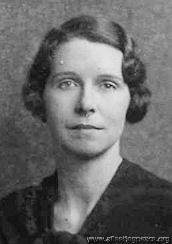 1934
1934b. 23 September 1901 in London, the daughter of Sir John and Lady Rees. He was MP for East Nottingham.
Owned a 1935 M.2H Hawk Major 145, G-ADBT.
She volunteered to fly Christmas presents to Prague in December 1938, for refugees.
From her obituary: "ROSEMARY, Lady Du Cros, who has died aged 92, was a pre-war dancer turned aviatrix and became one of the first of the wartime Air Transport Auxiliary (ATA) women ferry pilots. She continued her flying career long after the war.
Born Rosemary Rees, daughter of Sir John Rees, she went to ballet school in Chelsea, and joined a dancing troupe performing in revue. Returning to the UK in the early thirties from touring in Ceylon, China and America, her attention was diverted to flying after a friend had persuaded her to take a lesson and she enthusiastically embraced what was to be the enduring passion of her life.
Going solo in 1933 after seven hours' instruction, and complete with a private pilot's licence, she bought her own aeroplane and toured air-rallies, with excursions to practically every European country, enjoying the life of the halcyon years of pre-war private flying.
At the outbreak of war in 1939 she had acquired an instructor's licence, flown more than 90 aircraft types and had 600 hours in her logbook."
More here: https://www.ata-ferry-pilots.org/index.php/category-blog-1940/85-rees-rosemary-miss
-
Salaman, Peggy Louise
Peggy Louise Salaman 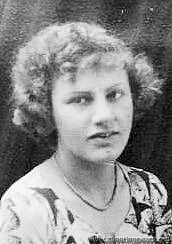 1935
1935b. 20 September 1910 (or possibly October 1907)
Peggy's brief moment in the spotlight came in November 1931. She and Gordon Store flew her D.H. Puss Moth 'The Good Hope', and two lion cubs, to Cape Town, in 5 and a half days, breaking Glen Kidston's record by 28 hours.
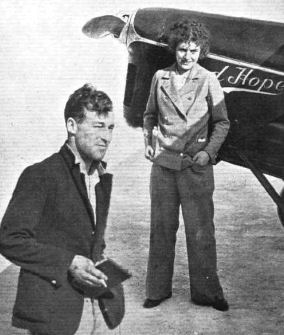
They gave her a celebration dinner at the Dorchester, at which she modestly pointed out that Gordon did "all the navigation, the chief part of the piloting, the forced landing [they missed an aerodrome and had to spend the night in 'dangerous country'] and for landing and taking off at the majority of the aerodromes", as well as looking after the engine. She did all the organisation and relieved Mr Store "when the flying was easy". Nevertheless, neither of them had more than about 20 hours sleep during the entire flight.
The lion cubs? She picked those up in Juba, [Southern Sudan, as you probably know] took them to Cape Town and then on to England. They appeared in the Christmas circus at Olympia and then went on the road with Bertram Mills's Circus. In October 1932 they were reported as being "sturdy young lions" who were "a picture of health". So that turned out well, then.
See a newsreel of her, and the lion cubs of course, here.
Their Cape Town record only stood for a few months, though; Jim Mollison managed it at the second attempt, in under 5 days, the following March.
She was, however, still (just) famous enough in May 1932 to get to meet Amelia Earhart at the American Embassy - more detailshere: Pioneering Women.
-
Scott, Elileen May
Elileen May Scott
Royal Aero Club Certificate: 8554 (16 Apr 1929)
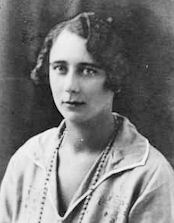 1929
1929b. 21 May 1903, from Barnsley, who owned:
- a 1928 Avro 594 Avian III, G-EBYO, which she later sold to Vera Brailey, then a
- 1929 Blackburn L.1C Bluebird IV, previously G-AAOC, registered EC-UUU in Madrid in December 1933
-
Sewell, Irene Agnes Brooke
Irene Agnes Brooke Sewell 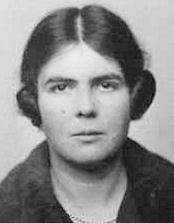 1930
1930b. 5 May 1900 in Dorking, owned a 1928 DH.60M Moth, G-AACD.
She used this in February 1932 when she flew, "unaccompanied, on a 3,500-mile flight to Transjordania. The flight is a pleasure one entirely, mainly to visit friends at Amman. She reached Le Bourget in the afternoon, but was held up there by bad weather until February 25, when she proceeded to Marseilles. Rome was reached on February 27, and after a stop of 20 min. she flew on to Naples. Here she was again held up by bad weather."
(Irene, love, are you absolutely sure it was a good idea to go in February?)
She was then "weatherbound at Naples for nearly a fortnight. She was able to resume her flight last week-end when she accomplished a splendid trip to Campania in 3 hr. 50 min. in such bad weather conditions that a German pilot, who left Naples shortly after for the same destination, had to return to Naples."
Anyway, she finally got there on March 19th. I hope it was worth it.
In August 1932, the "GOSSIP FROM GATWICK" was that "The feminine element was well to the fore during the last week. Miss Aitken [i.e. Grace Aitken, q.v.] did her first taxi trip, when she conveyed Miss Sewell to Heston to collect her machine, in which she put up such a very good show when she flew it out solo to Transjordania."
The aeroplane ended up at Cambridge Aero Club, and they duly wrote it off in a crash on the 24th June 1937.
Irene died in 1970.
-
Slade, Eleanor Isabella
Eleanor Isabella 'Susan' Slade
Royal Aero Club Certificate No. 8405 (16 Sep 1928).jpg)
in 1928

 with George Lees at the Leicester Air Pageant, 1929
with George Lees at the Leicester Air Pageant, 1929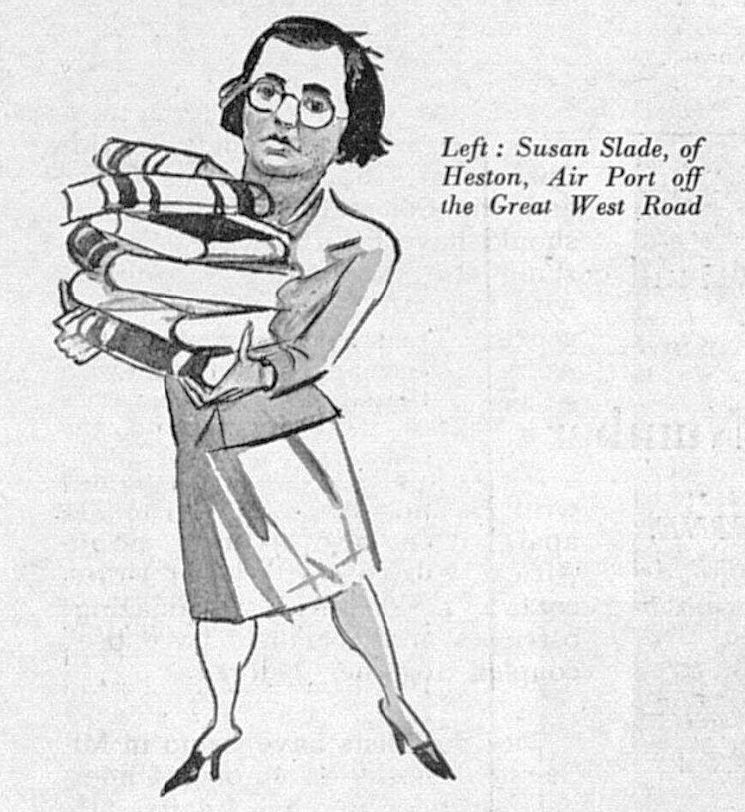
The Bystander Special Aviation Edition, 1933
b. 10 January 1904 in Hong Kong
 The Sketch - October 1929
The Sketch - October 1929"The popular secretary of Airwork, Heston Air Park - Miss Eleanor Slade"
"Efficiently managing the day-to-day business [of the King's Cup] was dynamic little Susan Slade... herself a pilot of considerable ability who has her own Moth".
C G Grey
.jpg)
In Holland, with Lyndsey Everard et al
On one flight with her elder sister Betsy in 1938 over Germany, having missed their destination, they came down at the Berchtesgaden; Herr Hitler was away at the time, but the servants gave them a conducted tour.
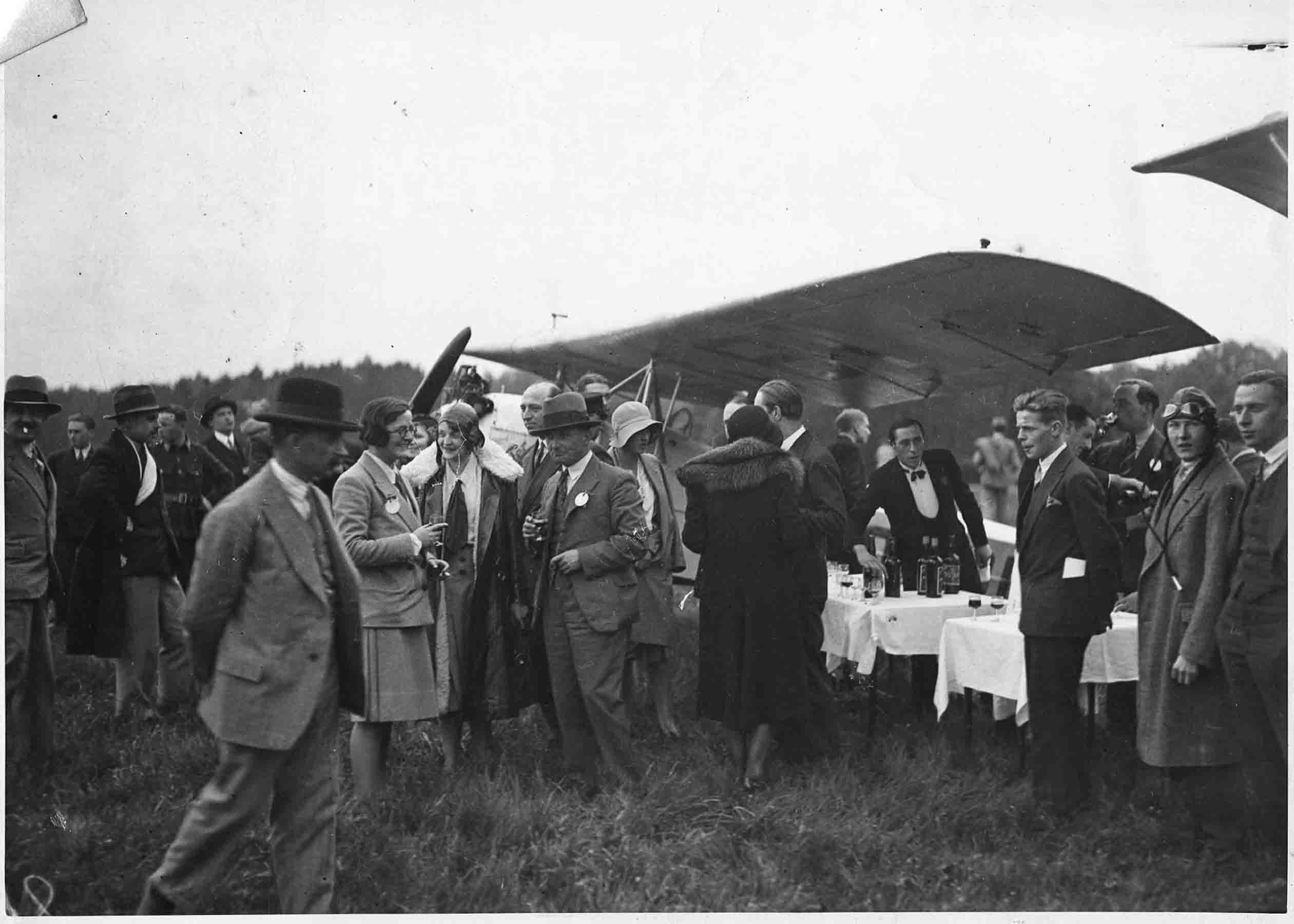
Rallye Aerien, Chateau d'Ardenne 17-19 May 1930 with Adelaide Cleaver
She won the first All-Ladies Race at Sywell, Northants in September 1931 (the Hon. Mrs Victor Bruce was second).
Air Transport Auxiliary in WWII
Even with her perceived limitations as a pilot, Susan Slade was a hard-working and trusted administrator, and an extraordinary, talented and much-loved lady.

r., with ??, Connie Leathart, Lady Runciman, HH Leech, Flt Lt Clarkson
Susan lived at Mallard's Court, Stokenchurch and is buried in Stokenchurch..
She owned:
a 1927 DH.60X Moth (G-EBSA), then
a 1929 DH.60G Gipsy Moth (G-AAIW), and
a 1931 DH.80A Puss Moth (G-ABLX).
-
Spicer, Dorothy
Dorothy Spicer 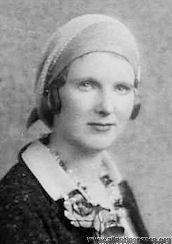 RAeC 9126
RAeC 9126
The 'tall and charming blonde friend' of Pauline Gower.
b. 31 July 1908 in Hadley Wood, Middlesex.
"Miss Spicer, however, holds a very high engineering diploma - the difficult 'B' licence for engines. A man holding this licence would have many excellent jobs at his command, but I doubt very much whether Miss Spicer will find her licence of any practical use."
Amy Mollison, writing in 1934
Amy was being a little too pessimistic; in 1936, Dorothy was appointed Chief Engineer to the 'British Empire Air Displays', which toured the country with 12 light aeroplanes.

She married Richard Courtney Pearse in April 1938 and they had a daughter, Patricia, in November 1939. Served at RAE Farnborough during WWII, eventually being promoted to Wing Commander.
d. 23 December 1946 in the crash of a London-Buenos Aires flight near Rio de Janeiro. Her husband was also killed.
Pauline Gower (only three months before her own death) wrote that "Dorothy is a great loss to civil aviation but even more so to her many friends".
-
Spooner, Winifred Evelyn
Miss Winifred Evelyn Spooner
Royal Aero Club Certificate No. 8137 (11 Aug 1927) 1927, aged 27
1927, aged 27
'Bad luck Wimpey' was one of the best-known women aviators of the time, and the one generally regarded as the best. She was awarded the International League of Aviation's Trophy for women aviators in 1929, and in 1930 Capt C D Barnard described her as 'the finest woman pilot in the world' (He went on to say that Lady Bailey was regarded as the 'second finest airwoman in the world', and we don't know what she thought about that...)
Learnt to fly in 1926 and took it 'more seriously than most' - in her first race in April 1928, she won the Suffolk Handicap (21 miles at 78mph), ahead of Neville Stack and four other male rivals; she won the 'heavy' category in the Round Europe Contest for Touring Aircraft in 1930 - covering 4,700 miles at 102mph, ("a very fine performance indeed", said The Times) and also competed in the Ladies event at Reading (May, 1931) - the other competitors were Amy Johnson, Grace Aitken, Pauline Gower, Dorothy Spicer, Susan Slade, Gabrielle Burr, Christina Young, and Fidelia Crossley - a historic gathering indeed.
Photo here


She soon took her 'B' (Commercial) Licence, and at one stage was the only professional woman pilot in the country.
In September 1927 her first flight abroad was to Venice to support the British Team in the Schneider Cup in Venice. Alan Butler (with Peter Hoare as passenger), and Hubert Broad, who took Maia Carberry, also went and, in case you were wondering, "Mrs. Carberry wore a pale blue leather flying helmet to match the colour of her Moth aeroplane."
She soon became regarded as 'one of the few women who matter in the air world'; in March 1928, when King Amanullah of Afghanistan was on a state visit to London, he inspected "the latest types of Imperial Airways passenger machines and a number of small Moth machines in private ownership. He carried on, through an interpreter, an animated conversation with Miss Winifred Brown, of Manchester, and Miss Spooner, of London, both of whom own and fly small two-seater machines."
In the 'Woman's World' section of the Inverness Courier of April 1928, this description of Winifred appeared: "[she] has not flown for very long, for it was only about three years ago that I knew her in Cologne, when she then drove, instead of an aeroplane, a two-seater car, through the crowded streets of Cologne, at a speed which most people would have been terrified to attempt. She was always, however, extremely cool and composed, and though her passengers were sometimes nervous she never seemed so. She was always very sporting, and played an excellent game of tennis. A good-looking, typically English girl, she made many friends among the British army in Cologne when doing voluntary work with the Y.M.C.A. there. [Winifred was with the 'Army of Occupation' in Germany at the time]"
She did have what she later described as her 'greatest air thrill' on Marlborough Common in May 1929; "she had been taking passengers up all day when, after one flight, she said she was not quite satisfied with the controls, and refused to take the next man until she had attended to the aeroplane. After doing so she started the propeller, and as she walked away from it the machine suddenly moved forward. Pluckily, Miss Spooner jumped and caught hold of the wing, her idea being to clamber into the cockpit and stop the engine. The machine quickly gathered speed, and she was dragged 40 or 50 yards [she later reckoned it was about 30 yards], when to the horror of the crowd the plane turned and buried its nose in the ground, hurling Miss Spooner some distance. She was unconscious. Doctors were sent for and she was taken to hospital. 'We thought she must have been killed,' an eye-witness told our representative."
She was taken to Savernake Hospital suffering from a sprained wrist, cuts, and slight concussion.
She does seem to have had quite a few run-ins with the local Constabulary; firstly in January 1929 for failing to keep her Alsatian dog under proper control (it had attacked another dog which "had no chance"), then in August 1929 for failing to produce a car driving licence (she said she had forgotten about it and flew to France the following day); then in 1931, she was fined £35 for leaving her motor car unattended and for failing to have lights on it. When she was told that she would be reported, she said: "I am used to it." A police-superintendent said there were no previous convictions recorded against her, as far as Reading was concerned. The Chairman then asked 'And none in the air? She replied 'There are no policemen in the air. That is why I like it.'"
I'm certainly sorry I missed her talk, given in April 1928 at Harrods in Brompton Road, on "Flying as a New Delight for Womankind". Later, in the early thirties, she wrote for "Good Housekeeping" on, of course, "Flying for Women", alongside such luminaries as John Galsworthy, Kate O'Brien, and Hugh Walpole.
.jpg)
September 1929 saw her accompanying NFS's chairman Freddie Guest (q.v.) to Nairobi, to inaugurate an air taxi service and give flying lessons. They took 3 aeroplanes with them, and flew them back (via South Africa) in February 1930.
She and E C T 'Cecil' Edwards tried to fly a Desoutter to Cape Town and back in December 1930, but this expedition ended up in a forced landing in the sea off southern Italy; Cecil and Winifred had to swim a couple of miles to shore.

She regularly competed in the King's Cup - coming 3rd in 1928 - and was a guest at Amelia Earhart's reception at the Royal Aero Club in May 1932.

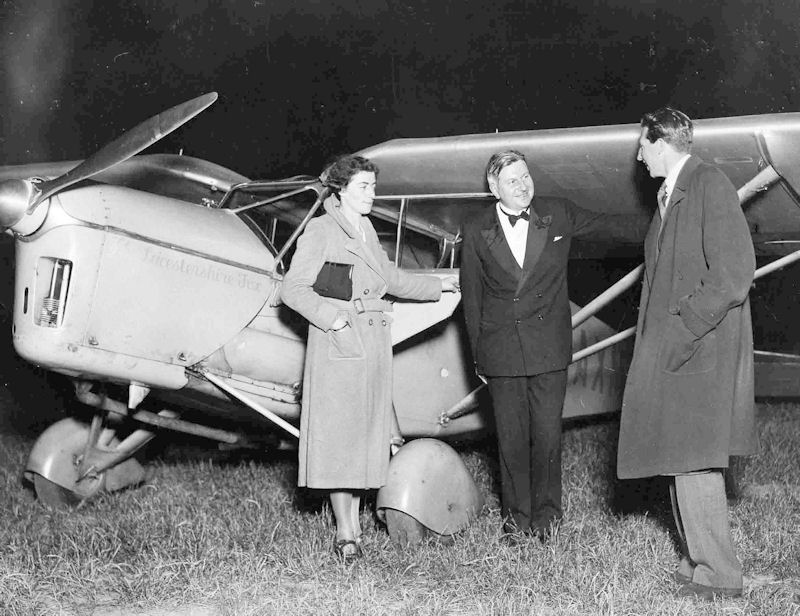
She was personal pilot to Leicestershire M.P. Lyndsey Everard from February 1931 - they are seen here with Nigel Norman.
And then, suddenly, on 13 January 1933, she was dead - not in an air crash, but as a result of a cold which rapidly worsened into pneumonia. Only few days before, in conversation with a friend, she had mentioned that her mother had died from influenza in 1918. "The deaths of both mother and daughter occurred with the same suddenness."
They are buried together in Hinton Parva: see http://www.earlyaviators.com/espoone5.htm


She left £1,357 0s 8d, and her brother, Capt. Frank Vivian Spooner, Indian Army (retd) was appointed administrator. She hadn't got round to writing a will.
There is a scholarship in her memory at Sherborne School for Girls.
"In the passing of Winifred Spooner the world has lost a great woman... she stood out as a woman of indomitable courage".
Winifred owned:
a 1926 DH.60 Moth (G-EBOT),
a 1928 DH.60G Gipsy Moth (G-AAAL, which she sold to Elise Battye);
a 1930 Desoutter IID (G-ABCU - this is the aeroplane she and E.C.T. Edwards ditched in the sea off Naples in December 1930), and later
a 1932 Breda 33 (G-ABXK), which was sold in Italy just 3 months before her death.
Winifred's brother Tony was chief flying instructor at the Montreal Flying Club in 1931. He was killed in March 1935 in Egypt when piloting a D.H. 84 Dragon, SU-ABI belonging to Misr Airwork, when it was caught up in a sandstorm and both engines failed.
-
Trevelyan, Nora Thornton
Miss Nora Thornton Trevelyan
Royal Aero Club Certificate 8901 (17 Aug 1929)

b. 3 Jun 1902, from Wooler, Northumberland
She owned a 1929 DH.60G Gipsy Moth, G-AAIB, but she crashed it at Renfrew following engine failure on the 15 May 1930; she and her passenger Mr Spencer escaped with minor injuries.
She married William Eric Davies in July 1931.
-
Tyzack, Ethel Doreen
Ethel Doreen Tyzack 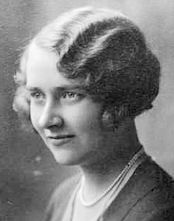 1930
1930.jpg) 1931
1931from Garthynghared, (yup, 'Garthynghared'), Dolgellau, Wales, b. 16 Sep 1907, owned a 1929 DH.60G Gipsy Moth, G-AAJM.
She was prominent in the First All-Ladies Flying Meeting in September 1931, performing an 'acrobatic' display in a Moth: "Seeing that this lady has only done some 50 hours since obtaining her licence, her show was really extraordinarily neat. She first of all did several loops, and then finished with two of the prettiest and most smoothly executed stalled turns that we have seen."
She and her brother Samuel Peregrine 'Perry' Tyzack
 bought an Avro Club Cadet (G-ACHW) in June 1933,
bought an Avro Club Cadet (G-ACHW) in June 1933, Doreen (r) with V Smith and the Cadet in 1935 - Northampton Mercury
Doreen (r) with V Smith and the Cadet in 1935 - Northampton Mercurybut the following month she crashed whilst performing an aerobatic display in D.H. Moth G-AAGS in Barmouth, killing one spectator and injuring another. She suffered head injuries and severe shock. The inquest's verdict was 'accidental death following a judgement of error' on her part.
So, in December, they advertised the Cadet for sale:
"AVRO 'CLUB' CADET. Done just under 16 hours since new. Instruments in both cockpits and Reid & Sigrist Turn Indicator. Special finish. Price £1,150.—Reply to : TYZACK, Plum Park, Towcester, Northants."
Southend-on-Sea Flying Services Ltd eventually bought it, but Ethel flew a 'Cadet' in Midland Aero Club's 1935 "At Home", so presumably it was after that.... and she then sold her own Moth the following year.
She married German-born Ronald Erwin Ottmar Velten in 1936 (they were still flying in 1952) and died aged 96 in January 2004 in Bournemouth.
-
Wilson, Mary Stewart Dashwood
Mary Stewart Dashwood Wilson
Royal Aero Club Certificate 8583 (13 May 1929)
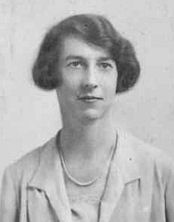 1929, aged 43
1929, aged 43b. 28 April 1886, from London.
Bought a 1927 DH.60 Moth, (G-EBRY) which she later sold to the Isle of Wight Flying Club.
Page 2 of 2

